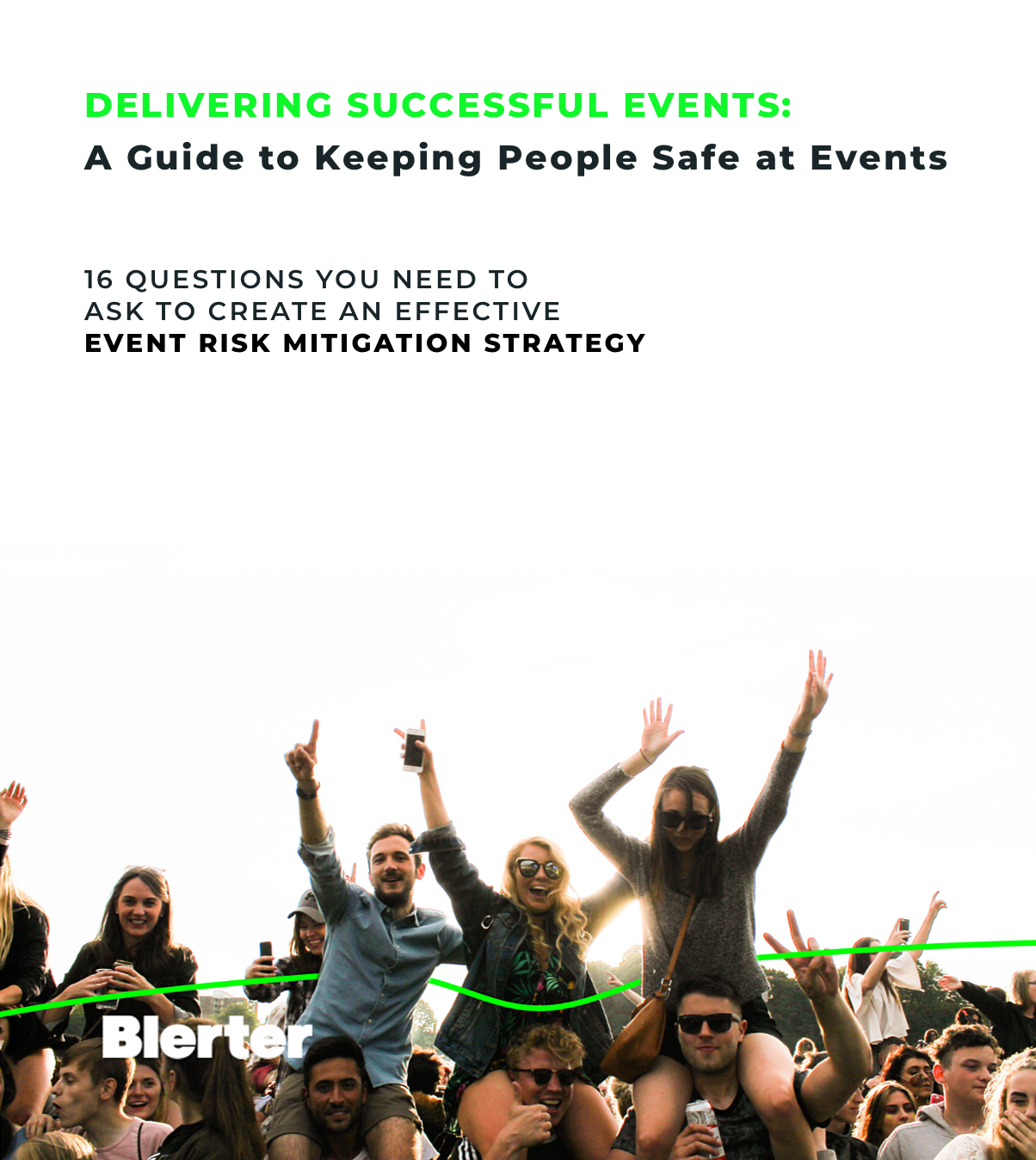Health & Safety isn’t the sexiest topic to think or talk about when you’re planning your next big event, but being aware of the Health & Safety risks associated with your event is integral to it running smoothly and keeping everyone attending or working at your event safe.
It’s fair to say, that in the past, it hasn’t always been given the attention it needs in the event planning stages, which can have - and has had at times - a detrimental impact. With a change in focus, and heightened “due diligence” required around this, there’s measures event professionals can and should put in place to ensure they’re taking Health & Safety seriously.
Particularly in New Zealand, where events are often smaller and used to have less international exposure, things like an event management plan to formulate risk mitigation and incident management processes was often more of an afterthought or a “nice to have” than standard practice. And, an attitude of “just getting stuff done” with little acknowledgement to the “how” tended to take precedent.
In 2015 WorkSafe, New Zealand’s primary workplace Health & Safety Regulator, introduced the new Health & Safety at Work Act in New Zealand as part of a wider process to improve New Zealand’s health and safety performance. This forced everyone working with or as part of a business - including event professionals - to look at Health & Safety and the responsibilities around it in a very different light.

Each country has their differences when it comes to the rules and regulations on this topic. However, there’s a lot to learn from looking at what this act is and how it’s affected operations in the events industry in New Zealand. Plus, it’s a good starting point to then draw on what you can do to mitigate your risk and prepare for when incidents happen.
We spoke to Event Insurance expert, Stuart Hartley, to help understand what this Act means for Event Professionals. And, how Event Insurance can be an invaluable investment if faced with c+ostly legal fees to defend yourself against a WorkSafe investigation when an unfortunate Health & Safety incident impacts your event.
To follow on from this, we’ve identified some methods and practices you can put in place to help prevent you getting caught out and improve incident management at your events.
Take a look at what we found.
The Act enforced a focus on everyone working together to create a safe and healthy environment and, as WorkSafe put it themselves, “shift the focus from monitoring and recording Health & Safety incidents to proactively identifying and managing risks”.
With that, event professionals now carry the responsibility to ensure risks are actively identified, communicated and managed. This was a crucial step for the events industry as the sophistication, size and exposure of New Zealand events was blossoming and beginning to see more exposure on the world stage. And, more importantly, it was also a crucial move in getting people to actively take responsibility for the Health & Safety of themselves and others, removing the attitude of “it’s someone else's problem”.

A key part of this act was defining, that, as any “persons conducting a business or undertaking” (PCBU) you have a responsibility to identify the likelihood of any risks, the potential harm caused by those Health & Safety risks and how they could be mitigated or eliminated.
As an event professional, this means taking reasonable steps to meet your obligations under this act. Including, and not limited to, developing and implementing Health & Safety practices and engaging all of the event workforce (from staff and volunteers through to contractors, vendors and suppliers) so they know how they’re impacted and what their responsibilities are.
In reality these are all things that, in best practice, an event organizer should be putting in place anyway - this act just makes it a legal obligation which comes with tangible consequences.
Even if you’ve done your due diligence around the responsibilities mentioned earlier, incidents still can and will happen. And, depending on their outcome can result in an investigation and or/prosecution and reparations.
It remains illegal for insurers to cover fines that are issued under the new Act, but taking out Statutory Liability Insurance does provide your event, directors and other specified individuals with cover for the cost of defence in an investigation and/or prosecution, and covers the reparations if ordered to be paid to a victim.
So, with the obligations of the WorkSafe Act in mind, and as part of your proactive approach to Health & Safety, it’s worth strongly considering covering your event with this type of insurance, no matter what the event is or its size.
Check out EventCover to find out more.

First thing’s first, as part of your event management plan:
You can employ the help of Health & Safety experts to ensure you’re covering all bases, are aware of all risks associated to your event and the best risk mitigation processes to put in place. This is extremely advisable for larger, more complex events where you may have multiple risks to take into account.
Using an Operations Management tool like Blerter can help you record and manage your risks and help reduce the likelihood of them escalating. It also becomes an invaluable tool for Incident Management to help you mitigate the impact of any Health & Safety related incidents that do occur.
Last but not least, communication is key for ensuring everyone is informed of their obligations surrounding Health & Safety at your event and for managing risks and resolving incidents efficiently. In a crisis, seconds can be the difference between life and death so having a seamless communications process in place can be the thing that prevents an incident becoming a huge issue that sees you facing legal action.

Streamline your delivery, be prepared for things that can go wrong and increase crew engagement at your next event.